The global pandemic has fundamentally reshaped traditional office dynamics, ushering in a new era marked by remote and hybrid work models. Organisations are now in the process of reimagining the purpose of physical workspaces, from fostering collaboration to providing spaces for focused work. Modern offices must cater to diverse needs and preferences while promoting engagement and creativity.
As organisations adapt to this cultural shift, the concept of the hybrid workplace has emerged as a representation of flexibility and adaptability.
This article delves into the complexities of post-pandemic office design, presenting key strategies to cultivate a dynamic and responsive workspace that drives productivity collaboration, and strengthens employee well-being.
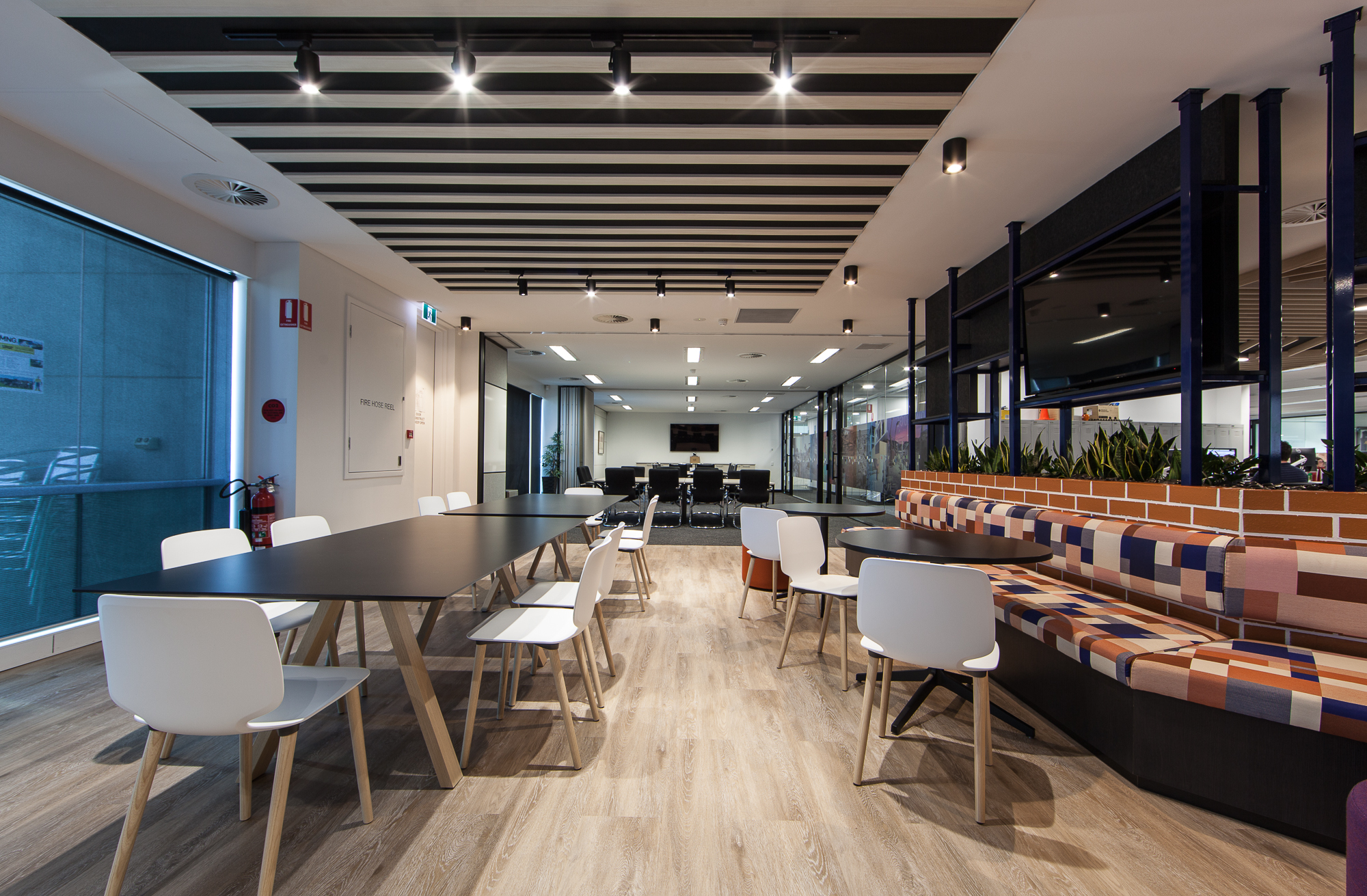
The hybrid workplace is a total reimagining of how we approach work, blending remote and in-office work seamlessly. This flexible model empowers employees to choose when and where they work, leveraging technology to bridge the gap between physical and virtual collaboration.
By embracing the hybrid workplace, organisations can unlock new levels of productivity and employee satisfaction while fostering a culture of autonomy and innovation.
Crafting the future of workspaces post-pandemic requires a holistic approach to office design. From creating quiet zones for focused work to designing communal spaces that encourage collaboration, the modern office must strike a fine line between flexibility and structure.
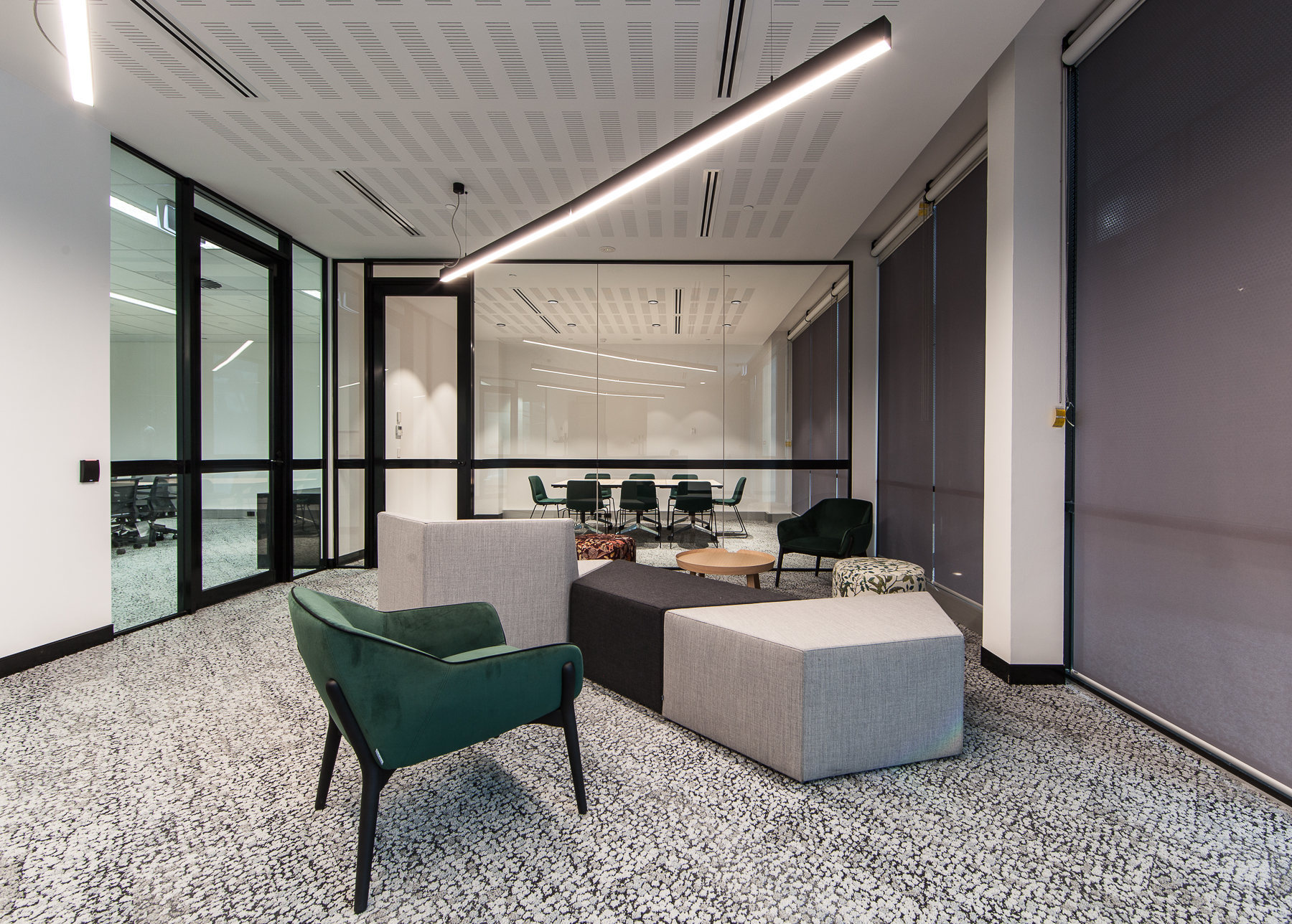
The transition from traditional to flexible and open-plan spaces reflects a broader shift towards accommodating diverse work practices and preferences. As organisations embrace the concept of the hybrid workplace, it’s essential to design workspaces that cater to the evolving needs of employees.
We have established 8 key design principles that can create an inclusive and adaptable work environment that meets the diverse and evolving needs of staff and their teams.
Post-pandemic office design has begun its transition from traditional fixed desks to more dynamic and flexible workstations. Hot-desking or shared workspaces reduce the reliance on dedicated desks, optimising the use of floor space, nurturing collaborative environments, and promoting fluidity within the office. This approach not only leads to cost savings but also provides employees with enhanced flexibility in choosing where they work.
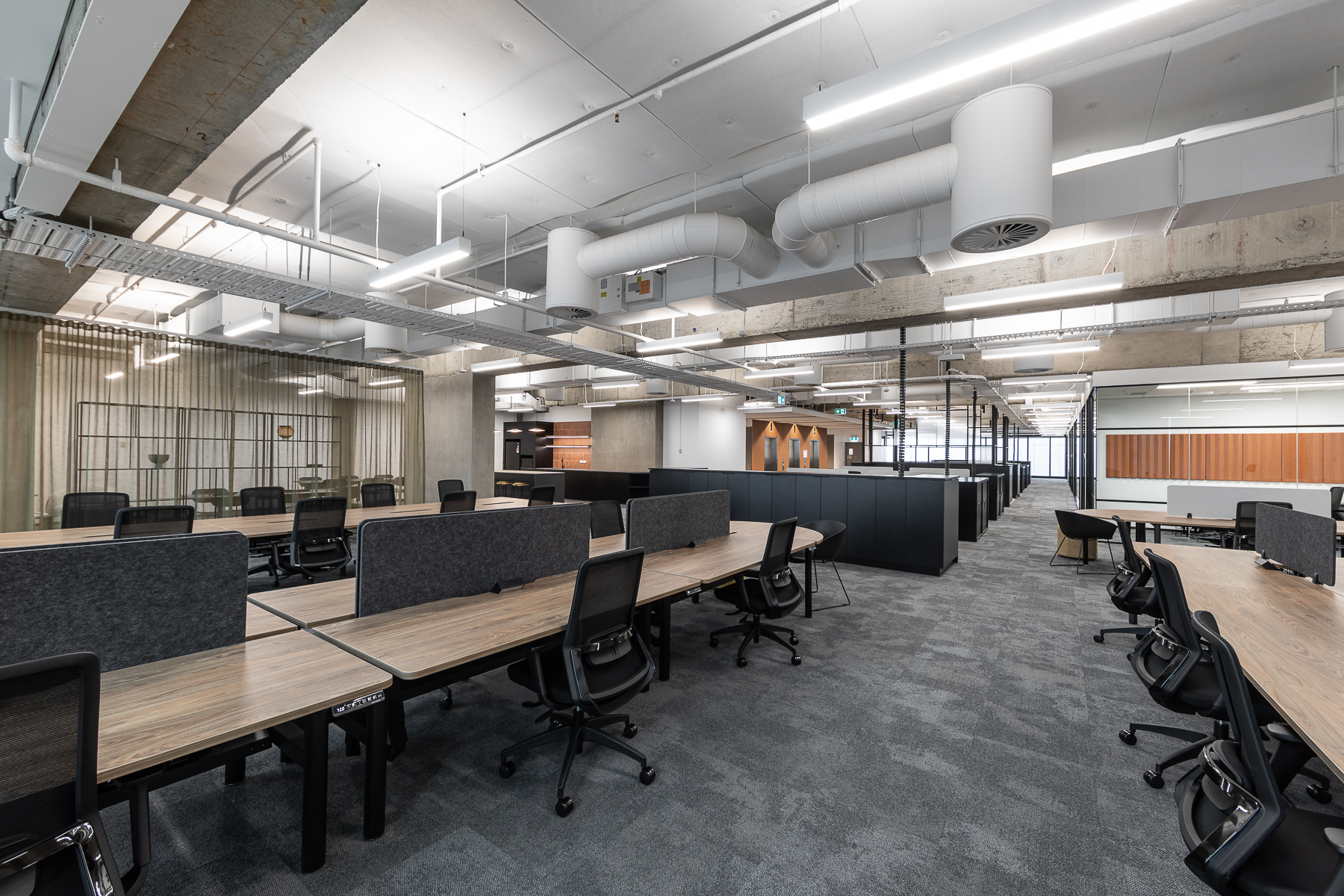
Central to the post-pandemic office is the creation of casual lounge areas reminiscent of the iconic Central Perk from the TV show “Friends.” Equipped with comfortable seating and collaborative work surfaces, these communal spaces are hubs for informal interactions, idea exchanges, and even just a pitstop for rejuvenation throughout the busy workday. In providing a relaxed setting, these areas promote a sense of community and camaraderie among employees, fostering creativity and innovation.
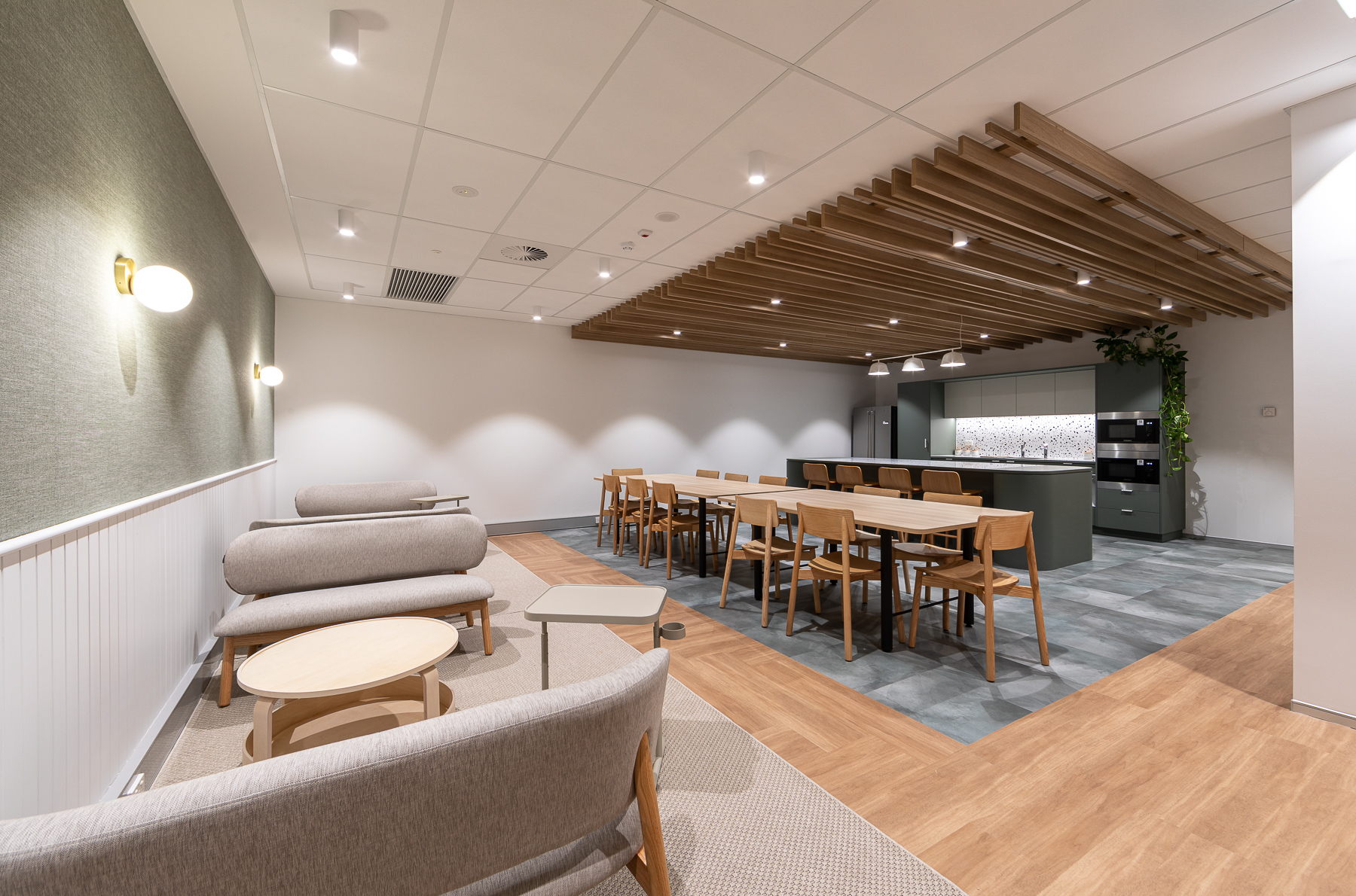
To counteract distractions in open-plan offices, the integration of quiet zones or “phone booths” is essential. These designated areas offer employees a sanctuary for focused and uninterrupted work, free from noise and interruptions. By incorporating soundproofing and privacy features, businesses can create environments purpose-built for deep concentration and productivity, emphasising a balance between collaboration and individual focus.
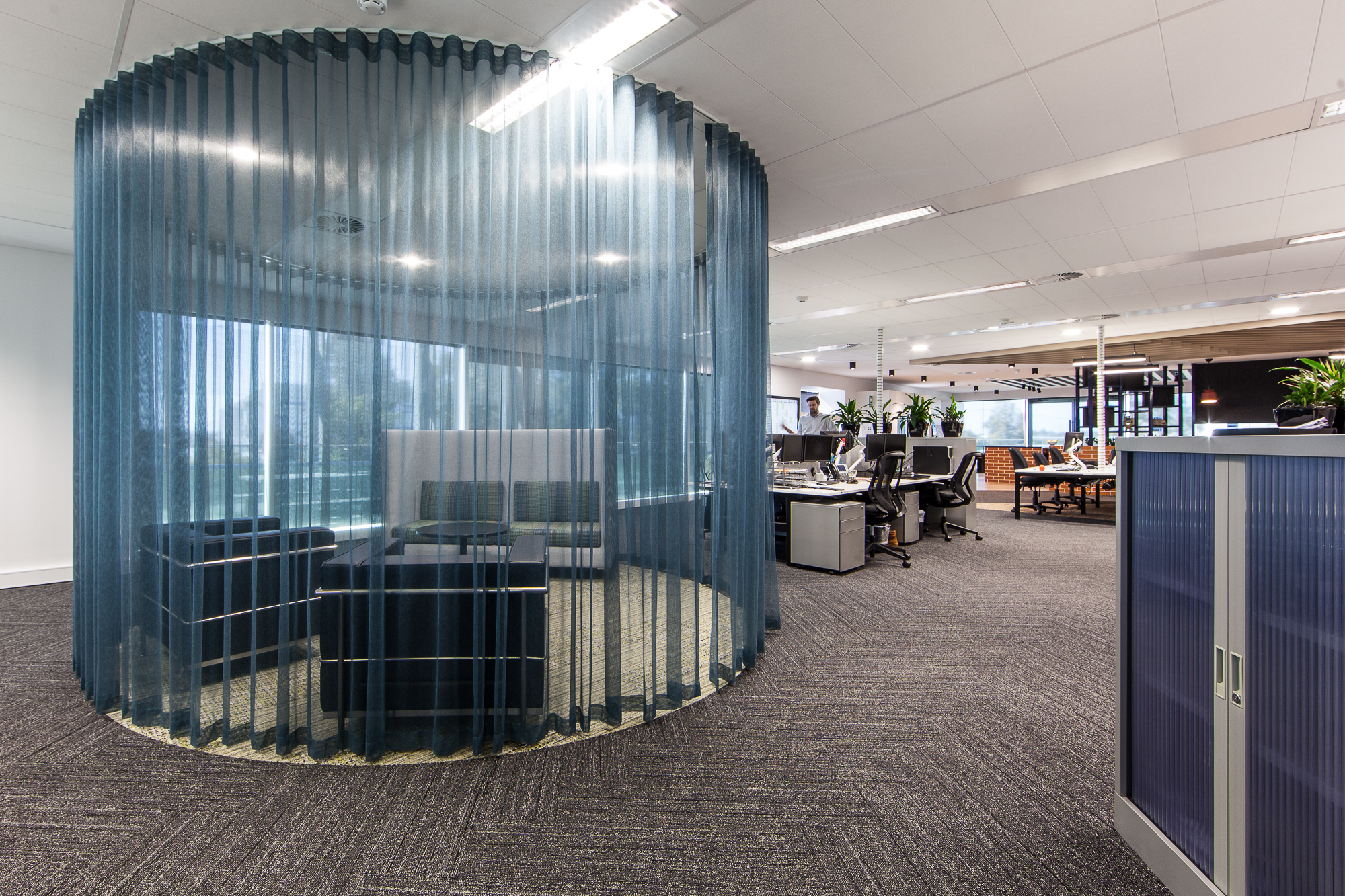
Traditional meeting rooms often need help to accommodate remote participants effectively. Innovative solutions such as 360-degree cameras and touchscreen TVs enhance the visibility and interactivity of virtual meetings, ensuring seamless communication and collaboration across teams separated by distance. By investing in advanced meeting room technology, organisations facilitate productive interactions regardless of employees’ physical locations.
In open-plan office spaces, meeting pods and phone booths offer private areas for meetings, brainstorming sessions, or individual work. These semi-enclosed, multi-use spaces are extremely flexible in providing staff with the opportunity to engage in focused discussions without disturbing the surrounding workspace, boosting productivity and collaboration in any manner.
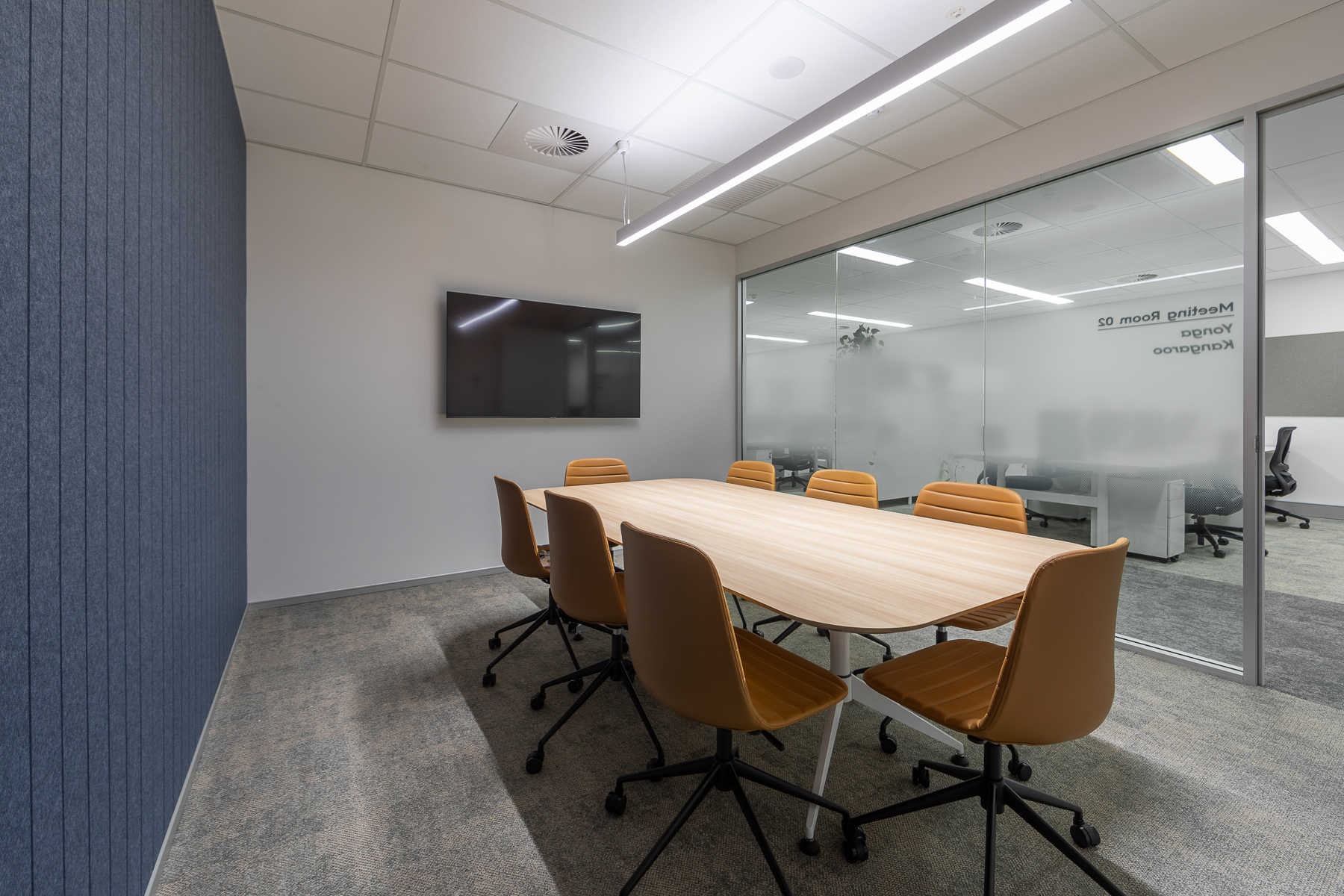
Redesigning traditional meeting rooms with bar table options facilitates natural and easy collaboration among employees. By incorporating low benches paired with whiteboards or smartboards, workplaces can create relaxed and informal settings that are useful in aiding discovery sessions, ideation meetings and all manner of open discussions.
Introducing pet-friendly spaces and home-like elements cultivates a welcoming and supportive workplace culture. Incorporating facilities that promote safety and comfort for pets can go a long way in enhancing employee satisfaction yielding greater outcomes in productivity, innovation and staff retention.
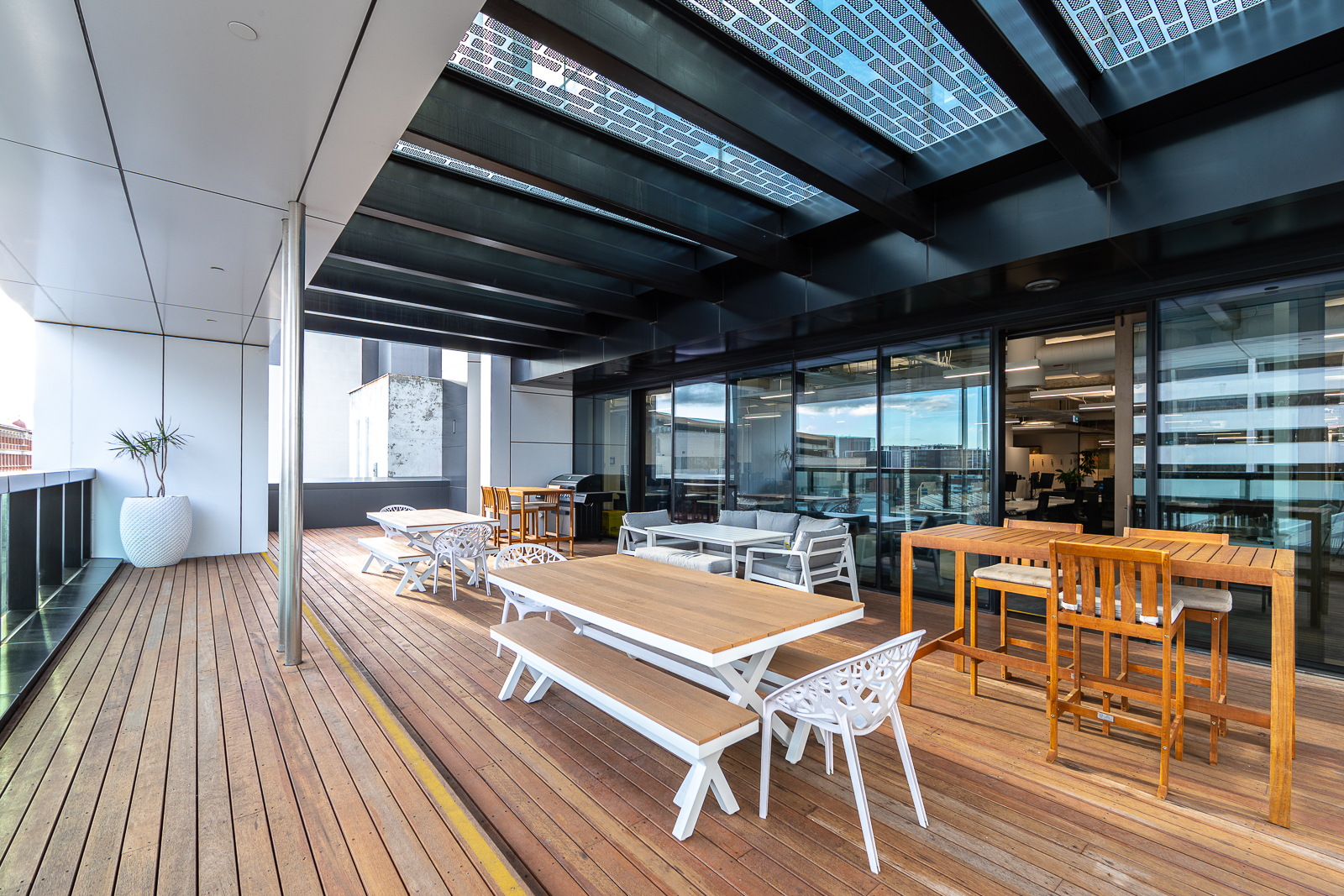
One of the fundamental, and often overlooked elements when designing a hybrid office is the importance of ongoing evaluation and adaptation to meet evolving needs. Feedback from employees and actively involving them in the design process, organisations ensure that office spaces remain responsive to changing work dynamics.
Organisations must prioritise ease of access, engagement in workspace design, and equity in the work environment to incentivise employees to return to physical workspaces
Companies should provide the right tools and technology to support remote work while also ensuring that in-person workspaces are safe and comfortable. This involves guaranteeing robust internet connectivity, industry-standard technology for online meetings, and a work environment conducive to taking calls and virtual catch-ups, thereby creating a shared experience for both in-office and remote workers.
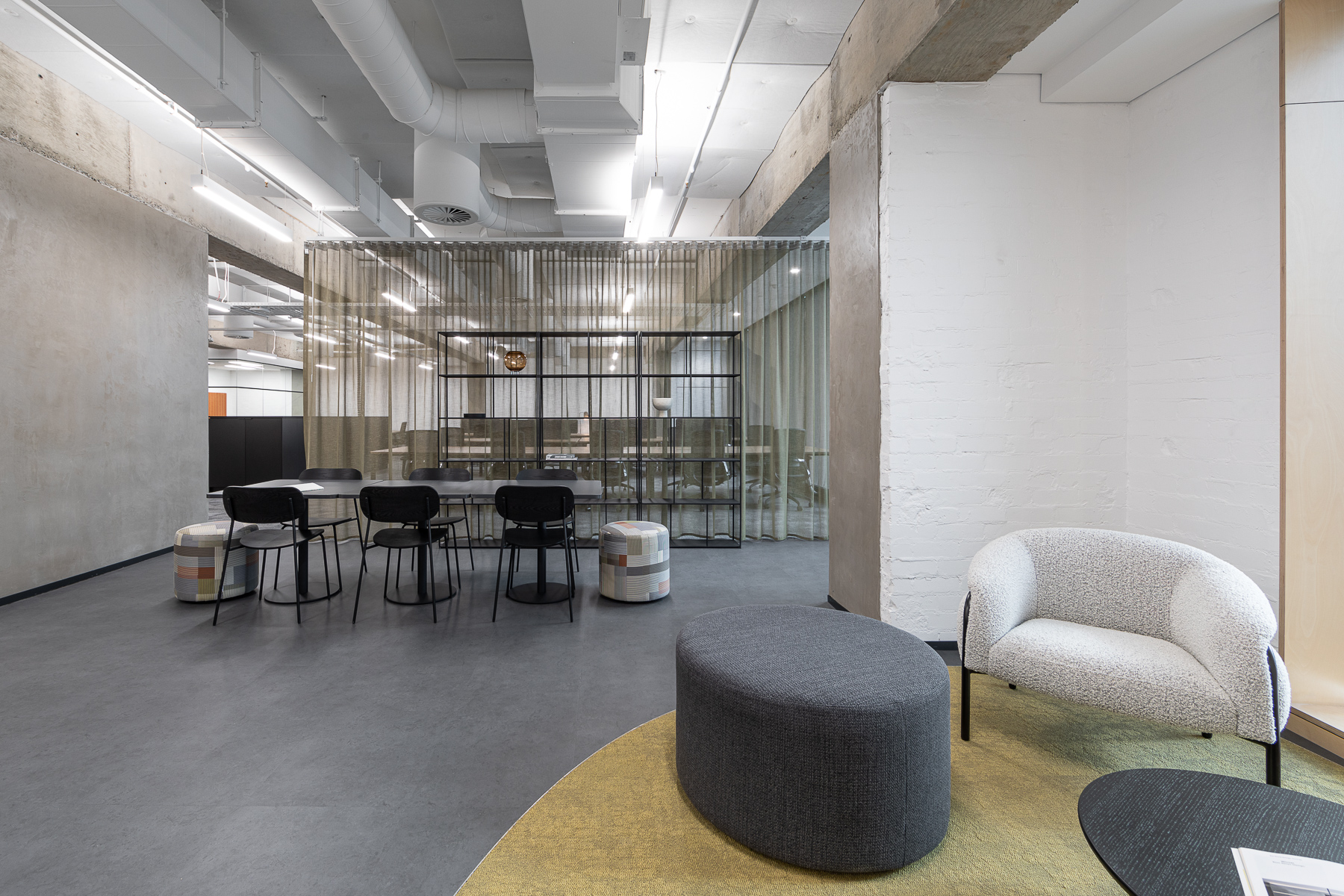
By curating workspaces to align with how spaces will be used, employers can ensure optimal functionality and employee satisfaction. This means considering the differences between impromptu water cooler moment catch-ups and structured online interactions with remote colleagues, tailoring the workspace accordingly to facilitate both types of interactions effectively.
Addressing discrepancies in the employee experience between working from home and working from the office, as well as catering to individual needs for optimal performance is essential. In the workplace different roles may have varying confidentiality and privacy requirements, hardware needs, and preferences for collaborative or focused work environments are essential. Addressing these differences, organisations can foster a sense of inclusivity and fairness among their workforce.
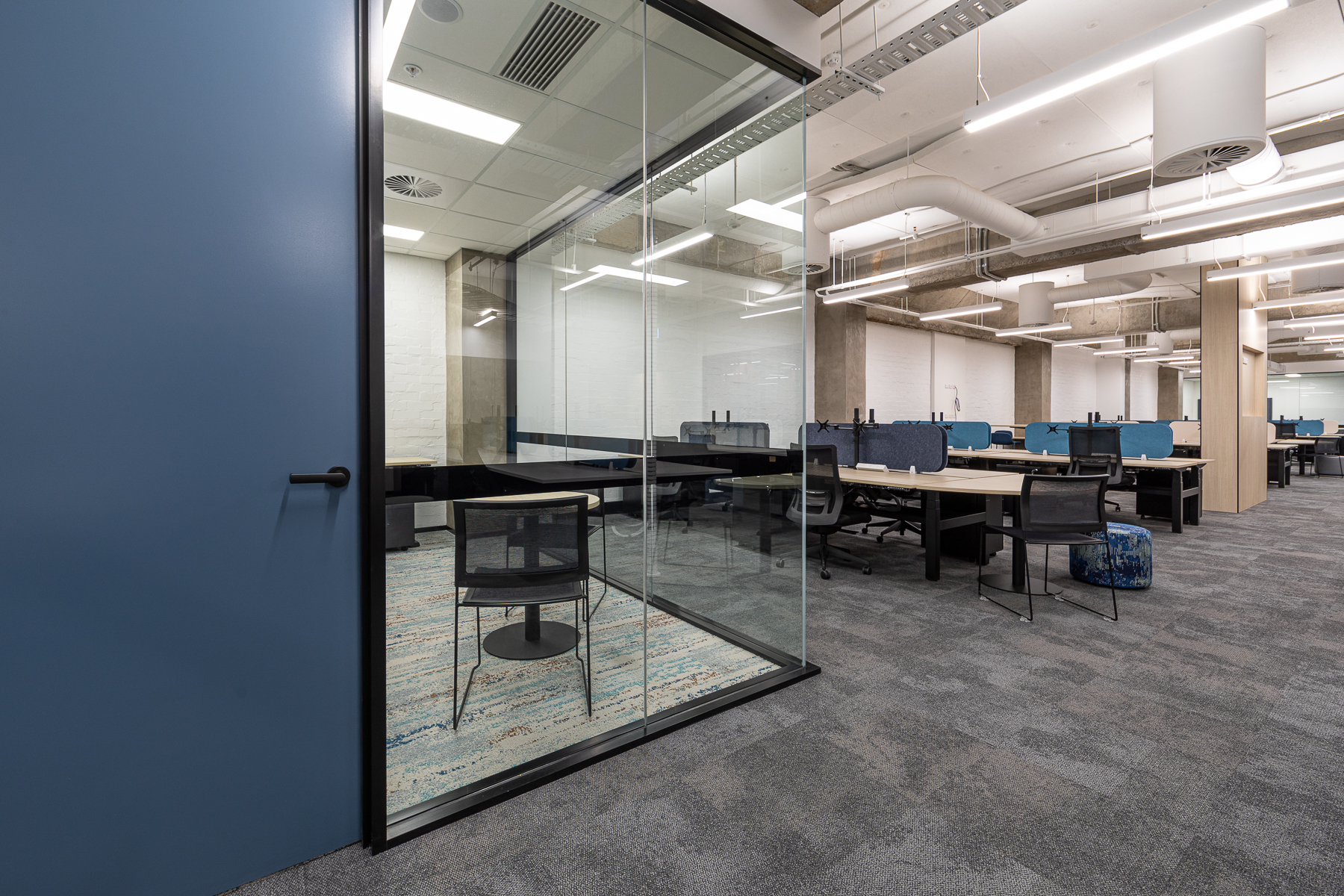
The post-pandemic hybrid office is a burgeoning era in workplace design, highlighted by flexibility, adaptability, and inclusivity.
We’ve explored key design strategies aimed at cultivating dynamic and engaging workspaces that support productivity, collaboration, and well-being.
As the workforce continues to evolve, organizations need to remain agile and receptive to feedback, ensuring that office designs align with the evolving expectations and demands of employees so that they feel strongly about returning to physical workplaces.
For thoughtful planning and strategic office design implementation, contact Davidson Projects and we can help you evolve your workspace to cultivate a culture of innovation and excellence, or learn more here.
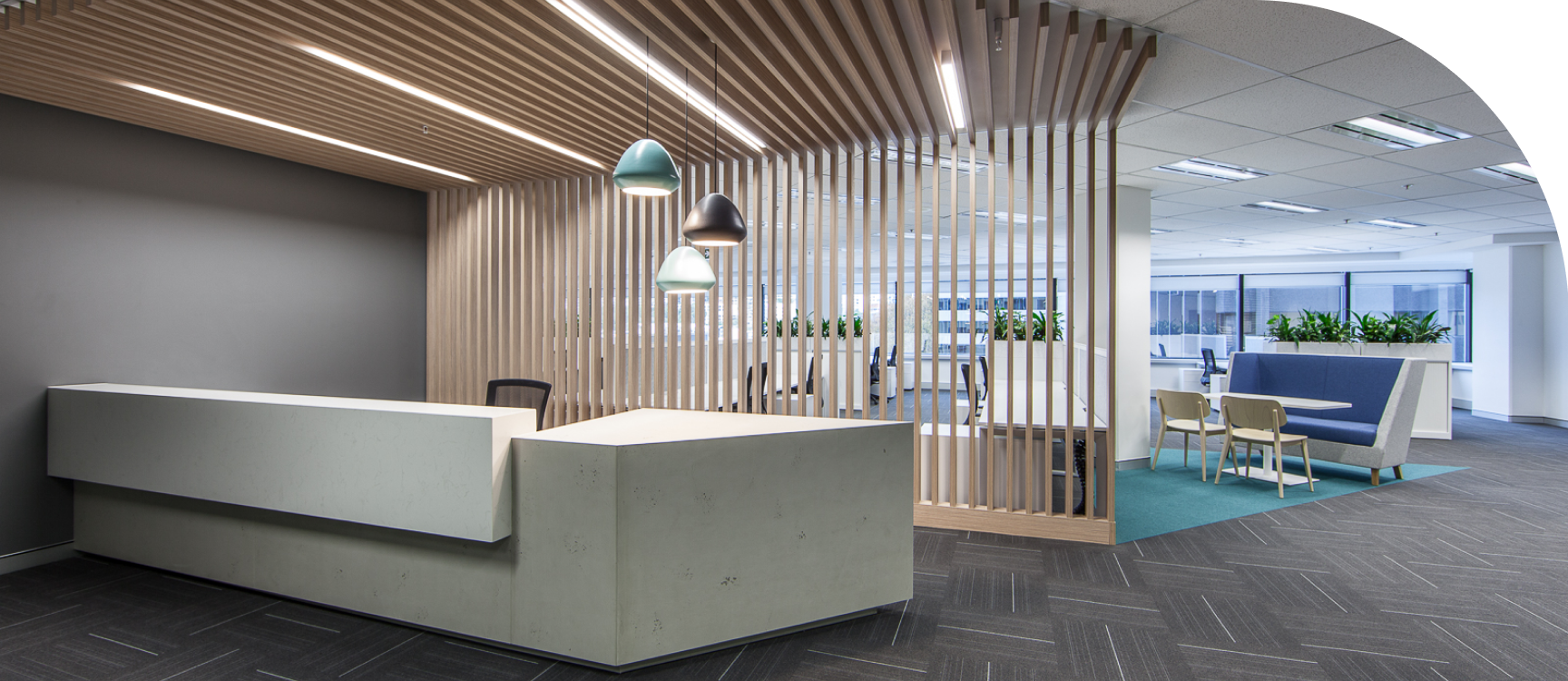
Contact Davidson Projects for office fit outs, office interiors, office refurbishment, base building and make good services or to receive a quote.
Contact Us